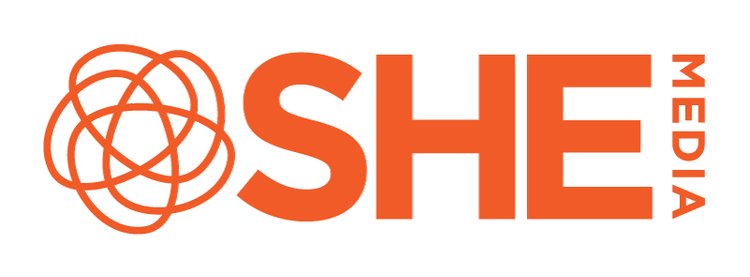How to Create a Content Calendar for Your Blog
A content calendar helps you visualize and plan your editorial for a period of time and over different publishing and posting platforms. It helps you plan the topics and formats of the content you plan to post on your site, ensures that your overall publishing strategy is properly implemented while also giving you a chance to make a detailed content plan.
The beginning of the year is a great time to start this process! It allows you to make room for fresh ideas, draw on previous years’ successes, and look into current trending topics.
Why You Need a Content Calendar – Benefits
Holistic Content Strategy
When you have a content calendar, you can ensure that you are continually publishing interesting and engaging content that aligns with the mission of your site and social channels. It helps you stay focused, maintain consistency, and help prevent you from getting side-tracked.
Marking Important Dates and Events
A content calendar also helps you plan for important events, holidays, and milestones. Planning significantly ahead of time to align your content with these holidays and publishing trending topics for specific key dates and holidays gives your content time to gain traction in search and on platforms like Pinterest. It’s also a way to make it more discoverable. For example, if you want to publish content on trending topics for a holiday like Valentine’s Day, publish your stories at least a week or two before the actual date of the holiday.
Preparation can also include the opportunity to identify unique topics to help your content stand out in a crowded holiday space. You may want to feature your fresh take on a recipe, craft, or personal story that your audience will relate to. This advance prep also gives you time to research new trends that may be popping in Google and Pinterest, so you can create something new and exciting to generate new visitors to your beautiful new content.
Consistency
It is important to publish consistently so that your audience learns when to watch for news from you, and over time increase your repeat visitors. We recommend publishing 3-4 new pieces a week if you can! This can be a mix of new content and refreshing older content that has fallen out of date. Here are more best practices on consistent publishing to your site.
Avoiding Content Gaps
If your blog covers several topics, without a content calendar you could end up having gaps, where one or more sections of your website are lacking in new and fresh content. To avoid gaps in your content, map out the different verticals and topic clusters in your blog and then decide on the topics and frequency for each vertical. Search keywords and popular trends for each vertical and create blog posts and topics around them. This strategy will give your blog a well-rounded and rich content portfolio.
Tips for Creating a Great Content Calendar
Align your Publishing and Social Media Calendars
It’s helpful if you align your social media calendar with your blog’s publishing calendar. First, you need to set your social media goals. Do you want your social media to draw attention to your blog posts, or do you want to gain more brand awareness? Whatever your goals are, start small, plan out a weekly cadence to your site posts, and correlate your social promotion with design assets. You can design social media posts using free tools like Canva. Your social media calendar can help you achieve cohesion in your overall publishing and content strategy. Here is some great advice on social media strategy from maven content creators.
Proactive Planning
Prepare your calendar ahead of time but not too far ahead! It’s usually a good idea to prepare a content calendar monthly or quarterly (if you have a more thought-through strategy). It helps to plot out full-year events, holidays, or seasonal trends, but you don’t have to have your specific articles in mind that far ahead. Manage your time to suit your schedule, and aim to stay focused on the foreseeable future. Always make room in your calendar for miscellaneous posts, newsworthy trends, and brand partnerships.
Map Out the Content Themes
Before you start filling in your calendar, first you should map out the content themes and topic clusters of your blog. As I mentioned earlier, many blogs have several content verticals and topic clusters all of which are a subset of the overall theme of the blog. When you map these out, you can prioritize the most important ones and also ensure that you are publishing content evenly across the different verticals and sub-topics of your blog. A content calendar helps you spread your time evenly across all clusters.
Iterate and Make changes When Needed
Your content calendar may be for a defined period, but is also a living document that can change continually. Be flexible with your plan and make changes and adjustments when needed. Also, put down your future content ideas even if you don’t have a fixed date to publish them yet. Write down your ideas, and then you can return to them another time to implement.
Types of Content to Include in Your Content Calendar
Always make room for different content formats like photo galleries, videos, quizzes, etc. Mixing it up will give your site visitors a more engaging experience, and it would help grow your site engagement. Your content calendar should include these different content formats.
Long-Form Content
Long-form blog posts could range from 1,500 to 2,000 words or more. This content should be on a properly researched topic that can live as evergreen content on your blog. Examples of long-form blog posts are case studies, how-to guides, and comprehensive guides. With this format, you can give your audience a comprehensive and detailed take on a topic.
Short-Form Content
With Short-form blog posts, you can publish more frequently which means you’ll always have fresh and new content on your blog. They could be around 500-800 words and in an easy-to-digest format. Short-form blog posts can help improve your readership and increase shareability.
Image Galleries
Including pictures in your blog posts is blogging 101. Image galleries are a way to reap even more benefits and increase engagement. They also cause visitors to be on your site for longer. You can use image galleries as a form of visual storytelling and maximize communication with your readers.
Videos
Adding video content to your blog is a sure way to get your engagement up and add variety to your content. There are several ways you can do this from embedding Youtube, Tiktok, and Instagram videos, to creating your own videos and uploading them directly. Videos can also help improve your RPM.
Refreshed Content
Last but not least, make space in your calendar to re-publish updated content. Updating older articles to add fresh copy, more ideas, and make them more relevant and SEO friendly is a good way to keep your website content relevant.
Tools and Templates to help you create a content calendar
Excel and Google sheets are very easy/low lift tools for you to organize your plan. You can also use offline planners if that’s what you prefer.
Explore popular project management and workflow tools like Notion, Airtable, and Monday.com.
Explore Social Media publishing tools that include calendar features, like the ones featured here.
Using the tips and tools I’ve shared with you, carve out time to create a content calendar for your blog. Happy planning!

